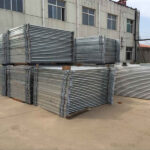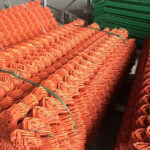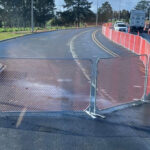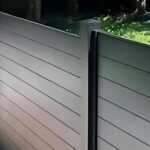How to Safely Load and Transport 16-Foot Cattle Panels: A Comprehensive Guide
Are you looking to transport cattle panels but unsure how to do it safely and efficiently? You’ve come to the right place! This comprehensive guide will walk you through everything you need to know about loading and transporting 16-foot cattle panels. Whether you’re a seasoned farmer or a first-time handler, this article will provide valuable insights to make your task easier and safer.
Why This Article is Worth Reading
Cattle panels are essential tools in farm management, but their size and weight can make them challenging to transport. Improper handling can lead to damage to your vehicle, the panels themselves, or even cause accidents. By following the expert advice in this guide, you’ll learn how to:
- Safely load and secure cattle panels
- Protect your vehicle from damage
- Comply with transportation regulations
- Save time and effort in the process
Let’s dive into the details of mastering cattle panel transportation!
What Are Cattle Panels and Why Are They Important?
Before we get into the logistics of transporting cattle panels, let’s briefly discuss what they are and why they’re so valuable on farms.Cattle panels, also known as livestock panels or feedlot panels, are versatile fencing solutions used in agriculture. Typically made of galvanized steel, these panels are:
- Durable and long-lasting
- Easily portable for temporary fencing needs
- Suitable for various livestock, including cattle, sheep, and horses
- Useful for creating pens, corrals, and even garden trellises
Paneles galvanizados para ganado are particularly popular due to their rust-resistant properties, making them a smart investment for farmers looking for long-term fencing solutions.
Preparing to Load Cattle Panels: Essential Equipment
Before you start loading your cattle panels, make sure you have the following equipment on hand:
- A suitable vehicle (pickup truck, flatbed, or trailer)
- Strong ratchet straps or rope
- Protective padding (moving blankets or cardboard)
- Work gloves
- Safety glasses
- A helper (recommended for safer handling)
Step-by-Step Guide: How to Load 16-Foot Cattle Panels
1. Choose the Right Vehicle
The first step in transporting cattle panels is selecting the appropriate vehicle. For 16-foot panels, you’ll need:
- A pickup truck with an 8-foot bed and the tailgate down
- A flatbed trailer at least 16 feet long
- A larger truck with a long enough bed
If using a pickup truck, you’ll need to transport the panels at an angle or with part of the panel extending past the tailgate.
2. Prepare Your Vehicle
Before loading, take these precautions:
- Clean the truck bed or trailer surface
- Lay down protective padding to prevent scratches
- Ensure the tailgate is secure if using a pickup truck
3. Position the Panels for Loading
With a helper, carefully lift the cattle panel and position it near the vehicle. If you’re working alone, you can “walk” the panel by lifting one end at a time.
4. Load the Panels
For a pickup truck:
- Lift one end of the panel into the truck bed
- Slide the panel in at an angle, with one corner touching the front of the bed and the opposite corner extending past the tailgate
- If transporting multiple panels, stack them neatly in the same orientation
For a trailer:
- Place the panels flat on the trailer bed
- Ensure they don’t extend past the trailer’s edges
5. Secure the Load
Proper securing is crucial for safe transportation. Here’s how to do it:
- Use ratchet straps or strong rope to tie down the panels
- Create at least two anchor points: one near the cab and one near the tailgate
- For added security, use a tie-down in the middle of the load
- Ensure the straps are tight and the panels don’t shift when pushed
6. Mark Extended Loads
If your cattle panels extend beyond the vehicle:
- Tie a red flag to the end of the load for visibility
- Check local regulations regarding extended load markings
Safety Tips for Transporting Cattle Panels
- Drive Carefully: Take turns slowly and be mindful of your extended load.
- Revisar regularmente: Stop periodically to ensure your load remains secure.
- Be Weather-Aware: Wind can affect your vehicle’s handling with a tall load.
- Know the Weight: Don’t exceed your vehicle’s payload capacity.
- Use Proper Lifting Techniques: Bend at the knees and lift with your legs to avoid injury.
Alternative Transportation Methods
If you don’t have access to a suitable vehicle, consider these alternatives:
- Rental Services: Many farm supply stores offer truck or trailer rentals.
- Delivery Services: Some suppliers provide delivery for a fee.
- Folding Panels: Some cattle panels are designed to fold for easier transport in smaller vehicles.
Unloading and Storing Cattle Panels
Once you’ve reached your destination:
- Carefully remove the tie-downs
- Unload the panels in reverse order of loading
- Store panels in a dry area to prevent rust
- Consider using cattle panel gates for easy access to your livestock areas
Maintenance Tips for Cattle Panels
To extend the life of your cattle panels:
- Clean them regularly to remove dirt and debris
- Check for any damage or weak spots
- Touch up any scratches with galvanized paint to prevent rust
- Store panels properly when not in use
Conclusion: Mastering Cattle Panel Transportation
Transporting 16-foot cattle panels doesn’t have to be a daunting task. With the right preparation, equipment, and techniques, you can safely and efficiently move these essential farm tools. Remember to prioritize safety, secure your load properly, and drive carefully. By following this guide, you’ll be well-equipped to handle cattle panel transportation like a pro!
Key Takeaways:
- Choose the right vehicle for transporting 16-foot cattle panels
- Properly secure the load using ratchet straps or strong rope
- Prioritize safety during loading, transportation, and unloading
- Consider alternative transportation methods if needed
- Maintain your cattle panels to ensure longevity
By mastering these skills, you’ll not only save time and effort but also ensure the safety of yourself, your equipment, and other road users. Happy transporting!Cattle panels are an invaluable asset for any farm or ranch. With proper handling and transportation, you can make the most of these versatile fencing solutions. Remember, practice makes perfect, so don’t be discouraged if your first attempt isn’t flawless. With time, you’ll become an expert in managing and transporting your cattle panels efficiently and safely.









